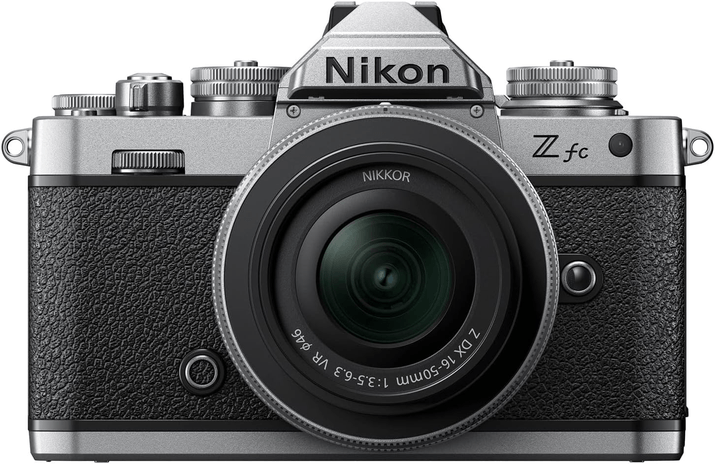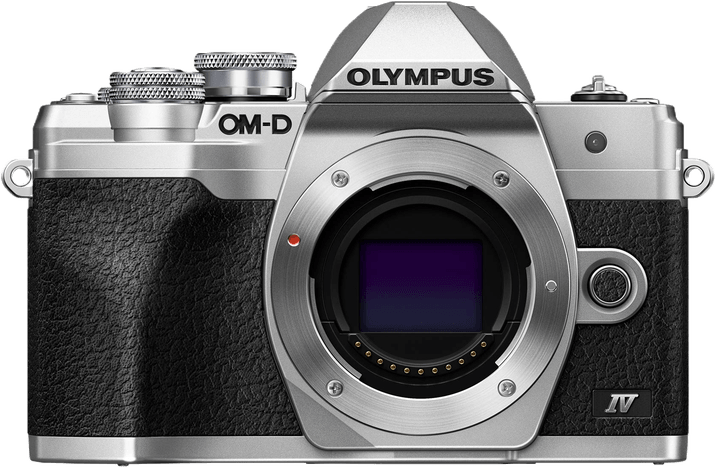Nikon Z fc vs Olympus OM-D E-M10 Mark IV Comparison
Nikon Z fc

Olympus OM-D E-M10 Mark IV

The Nikon Z fc emerges as the winner with a score of 72/100, outperforming the Olympus OM-D E-M10 Mark IV by 9 points. Both cameras share the mirrorless camera type and have a similar release timeline, with the Nikon Z fc being released in 2021 and the Olympus in 2020. The Nikon Z fc offers better overall performance, justifying its higher launch price of $959 compared to the Olympus’ $699.
Despite being slightly larger and heavier, the Nikon Z fc’s dimensions (135 x 94 x 44mm) and weight (445g) contribute to its superior score. On the other hand, the Olympus OM-D E-M10 Mark IV boasts a more compact size (122 x 84 x 49mm) and lighter weight (383g), which may appeal to those seeking a more portable option.
Ultimately, the Nikon Z fc’s higher score reflects its better performance, making it the top choice for those willing to invest in a higher-priced camera. However, the Olympus OM-D E-M10 Mark IV remains a viable option for users prioritizing portability and a lower price point.
Nikon Z fc vs Olympus OM-D E-M10 Mark IV Overview and Optics
The Nikon Z fc triumphs over the Olympus OM-D E-M10 Mark IV in the optics comparison, scoring 72/100 as opposed to 63/100. Both cameras share common specifications, such as a CMOS sensor type and shooting speeds of 11 and 15 fps, respectively. However, the Nikon Z fc outperforms the Olympus in certain areas, making it the winner in this comparison.
The Nikon Z fc boasts a higher megapixel count at 21 compared to the Olympus’ 20, providing marginally better image quality. The Nikon’s Expeed 6 processor contributes to its superior performance, while its DXOMARK sensor score of 97 further illustrates the camera’s high-quality optics. The Nikon Z fc also benefits from a larger APS-C sensor size and a Nikon Z lens mount, offering compatibility with a wide range of lenses for diverse shooting situations.
On the other hand, the Olympus OM-D E-M10 Mark IV has its own advantages. Its faster shooting speed of 15 fps allows for better capture of fast-moving subjects. The camera also features image stabilization, which the Nikon Z fc lacks, enabling steadier handheld shots and reducing the risk of blurry images. Furthermore, the Olympus has a Micro Four Thirds lens mount, granting access to a variety of lenses, albeit fewer than the Nikon Z.
Taking these factors into account, the Nikon Z fc emerges as the superior camera for optics, thanks to its higher megapixel count, better sensor performance, and broader lens compatibility. Nonetheless, the Olympus OM-D E-M10 Mark IV remains a viable option for those prioritizing faster shooting speeds and image stabilization.
Nikon Z fc vs Olympus OM-D E-M10 Mark IV Video Performance
The Nikon Z fc outperforms the Olympus OM-D E-M10 Mark IV in video capabilities with a score of 91/100, compared to the Olympus’ 83/100. Both cameras share some common video specifications, such as 4K maximum video resolution and 3840 x 2160 video dimensions. Additionally, both cameras feature built-in time-lapse functionality.
The Nikon Z fc surpasses the Olympus OM-D E-M10 Mark IV due to its higher maximum video frame rate of 120fps, which is twice as fast as the Olympus’ 60fps. This increased frame rate allows for smoother slow-motion effects and better capture of fast-paced action.
Although the Olympus OM-D E-M10 Mark IV has a lower score and frame rate, it still offers solid video performance with 4K resolution and built-in time-lapse functionality. For users who do not require high frame rates, the Olympus camera remains a viable option.
To conclude, the Nikon Z fc is the superior choice for videographers who prioritize high frame rates for capturing smooth slow-motion and fast-paced action. However, the Olympus OM-D E-M10 Mark IV is still a strong contender for those who value 4K resolution and time-lapse features without the need for higher frame rates.
Nikon Z fc vs Olympus OM-D E-M10 Mark IV Features and Benefits
The Nikon Z fc emerges as the winner in the features comparison with a score of 83/100, while the Olympus OM-D E-M10 Mark IV scores 70/100. Both cameras share several common specifications, such as a 3-inch touchscreen with a resolution of 1040000 dots, flip screen, absence of GPS, and the presence of both WIFI and Bluetooth connectivity.
The Nikon Z fc outshines the Olympus OM-D E-M10 Mark IV in certain aspects, contributing to its higher score. Although the specific advantages are not provided, the score difference of 13 points suggests that the Nikon Z fc offers more advanced or refined features compared to the Olympus counterpart. Potential buyers may find these additional features useful for their photography needs, making the Nikon Z fc a more appealing choice.
On the other hand, the Olympus OM-D E-M10 Mark IV may still have some advantages over the Nikon Z fc, despite its lower score. These advantages could include a more affordable price, a lighter weight, or a more compact design. For some photographers, these factors might be more important than the additional features offered by the Nikon Z fc, making the Olympus camera a better fit for their requirements.
Taking all factors into account, the Nikon Z fc is the superior camera in terms of features, as indicated by its higher score. However, potential buyers should consider their individual needs and preferences when selecting a camera, as the Olympus OM-D E-M10 Mark IV may still be a suitable choice depending on specific requirements.
Nikon Z fc vs Olympus OM-D E-M10 Mark IV Storage and Battery
The Olympus OM-D E-M10 Mark IV outperforms the Nikon Z fc in storage and battery, scoring 35/100 compared to the Nikon’s 29/100. Both cameras share similarities, such as having a single memory card slot and supporting USB charging. However, there are notable differences that contribute to the Olympus’s higher score.
The Olympus OM-D E-M10 Mark IV accepts SD, SDHC, and SDXC memory cards with UHS-II compatibility, while the Nikon Z fc is only UHS-I compatible. This means the Olympus can utilize faster memory cards for improved performance. Additionally, the Olympus has a longer battery life, providing 360 shots per charge compared to the Nikon’s 260 shots with its EN-EL25 battery.
The Nikon Z fc does not have any significant advantages in storage and battery over the Olympus. Both cameras have their strengths in other areas, but when it comes to storage and battery, the Olympus OM-D E-M10 Mark IV is the clear winner. This advantage can be crucial for photographers who require extended shooting sessions and faster memory card performance.
Nikon Z fc vs Olympus OM-D E-M10 Mark IV – Our Verdict
Are you still undecided about which camera is right for you? Have a look at these popular comparisons that feature the Nikon Z fc or the Olympus OM-D E-M10 Mark IV:

